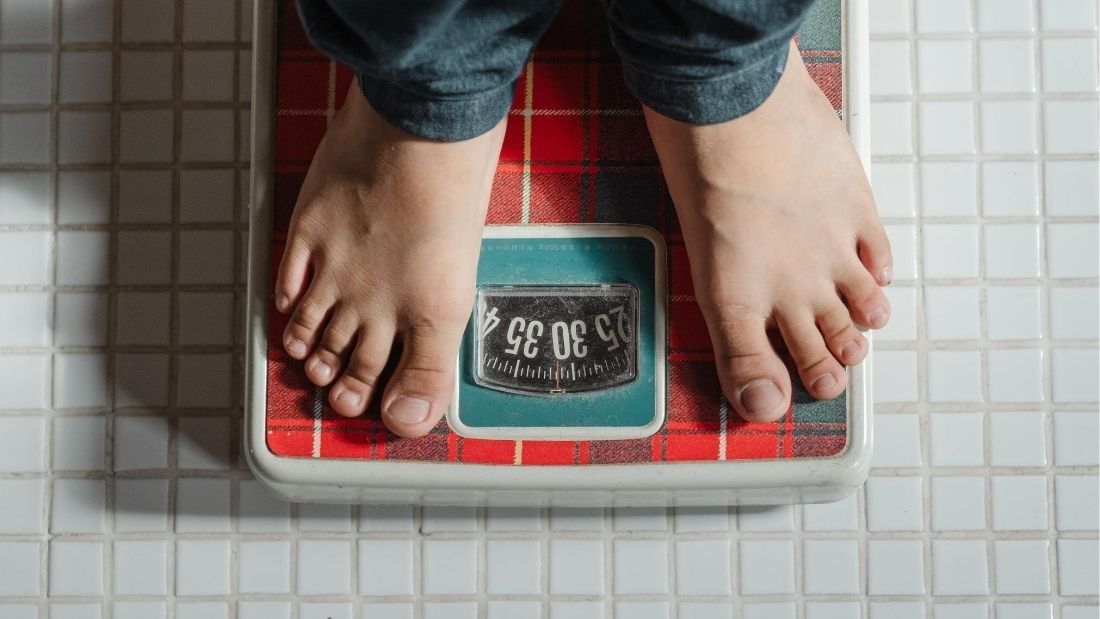Eat your way to healthy weight

A vegan diet is naturally high in fibre, has a better fat profile and makes us generally more aware of nutrition basics. Most people don’t go vegan for health reasons and aren’t necessarily into healthy eating but like it or not, going vegan makes you learn a thing or two about a healthy diet – and it shows.
We’re all different, including the speed and efficiency of our metabolism and whilst you can eat exactly the same foods as your vegan friend, you may have a different body shape. And that’s ok. Work with what you’ve got and make your diet suit your needs.
Fibre focus
Your diet works well when you feel satiated and have a steady energy supply. If you feel hungry or eat foods that give you a sugar-high followed by tiresome low, your chances of losing weight plummet because sooner or later you’ll give in and binge to feed those cravings. To stop that from happening, make fibre-rich foods a part of every meal. Fibre binds water and increases the food bulk in your digestive tract, which helps you feel fuller. It also slows down carbohydrate (sugar) absorption and thus ensures you have a more steady energy supply.
Go for wholegrains (bread, pasta, rice, oats), whole fruit and veg (or blended in smoothies), pulses (beans, lentils, peas, chickpeas) and nuts and seeds. Steer clear of white bread, white rice, refined snacks (sweet or salty), sugar, fruit juice (unless it’s freshly squeezed) and sweetened ‘healthy’ snacks such as granola bars that are essentially held together by sugar. Bear in mind, fruit is healthy as long as it’s eaten fresh and whole. All the fibre, vitamins and minerals fruit contains are good for you and the fruit’s sugar is absorbed slowly – so fruit is always a good choice!
Good fats, bad fats
We’ve evolved to have a taste for fatty foods because throughout our evolution, fat meant a good energy source. That’s why we often find fatty foods irresistible and it’s so easy for us to overdo it and pile on pounds. The truth is, we need only a small amount of essential unsaturated fats, which you can get from a tablespoon of ground flaxseed, chia seeds, hempseed or walnuts.
For the body to absorb vitamins A, E and K from the diet we also need a bit of fat (these are fat-soluble vitamins) but again, you only need small amounts. As a rule of thumb, don’t use more than a teaspoon of oil per portion for cooking, use fatty spreads on bread only in a thin layer and when snacking, make sure you don’t have more than two tablespoons’ worth of nuts or seeds.
If you fancy chips, bake them in the oven! And don’t forget to read labels – hummus can have surprisingly high amounts of fat and the same goes for foods like coconut yoghurt, flapjacks and other snacks.
Be a protein pro
Protein is important and protein-rich foods make you feel fuller for longer as it takes your body a while to digest it. Incorporating a good protein source at every meal can help curb cravings later. Apart from pulses (including soya foods), nuts and seeds, oats are a good source.
Treats and pitfalls
Most of us can’t abstain from our favourite foods for long and eventually give in to the temptation. The best way to deal with this is to allow yourself a small amount and pair it with something healthier – one biscuit and a piece of fruit instead of five biscuits – or share your treat with a friend so you automatically eat a smaller portion. Don’t overindulge and pick your treats wisely so they’re a small addition to your overall diet but never a staple.
One of the common pitfalls is bread and pastry-based foods. There’s nothing wrong with bread if it’s a legitimate part of the meal – a sandwich or toast. However, eating bread along with pasta, rice dishes or potatoes essentially makes it a second side-dish and can easily double your energy intake.
Pastry foods are another diet enemy in disguise. Most pastry is packed with so much fat that it hikes up your energy intake much more than you’d expect, especially if you have a pastry-based food such as pie together with potatoes. The pastry counts as one side dish and the potatoes as another.
Fast forward?
Some people swear by fasting and the 5:2 diet has become very popular – eating only about 500 calories on two days a week and eating normally on the remaining five. It can give you great results but it doesn’t suit everyone. If you have a physically demanding job, exercise a lot or have a health condition that reacts to such energy intake swings, it might not be for you.
Exercise is a must – or is it?
It’s natural and healthy for us to be physically active so any form of activity is good, not just for weight loss but for general wellbeing. It makes you feel better because it releases feel-good hormones. When you’re trying to lose weight, it’s always better to up your physical activity rather than severely limit your food intake. Go for a walk, hike, use the stairs, dance, cycle, jog or do yoga. The gym is an option but not a must. Walk to the shops instead of driving – or at least park your car at the far end of the parking lot.
There’s no magic formula but a vegan diet is great for achieving and maintaining healthy weight. It might take a while for you to figure out what suits you best but if you’re a vegan, you’re on the right track already!




